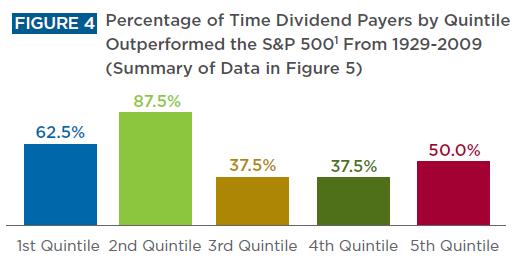Before I get started, I want to invite all of you to my upcoming webinar, “Profit in Any Market Using One High-Probability Trade.” This FREE live webinar event will take place today, September 19th at 6:00 ET. Click here to join. If you are not able to attend, I urge you to still sign up so we can send you the video after the event.
Will the so-called fiscal cliff spell disaster for the stock market? More specifically, what will it mean for dividend investors?
As a refresher, the “fiscal cliff” is the potential expiration of Bush-era payroll, capital gains and dividend tax cuts at the end of this year.
However, the fiscal cliff should not concern dividend investors too much.
Currently, dividends are taxed at a maximum rate of 15%. But that rate could rise in 2013 if Democrats and Republicans can’t agree on a bipartisan intervention.
But there is one important aspect that I am almost certain will not be mentioned in the debate. The reinvestment of dividends has contributed to 45% of the total return for the S&P 500 over the past 80 years.
And while tax implications are an important factor in determining investment return, you should not allow tax policies to hamper your long-term planning. Because we all know that it’s a lock-solid guarantee that current tax policies will change several times during our lifetimes.
You should stay focused on what works – an investment strategy that has stood the test of time: dividend stocks.
Of course investing in dividend stocks is nothing new. But there have been some new insights into the most effective way to invest in this asset class.
For instance, take a look at the following chart:
Oftentimes, investors seek stocks with the highest-paying dividends. Well, it’s a trap.
In the case of dividend investing – second best is best.
Wellington Management recently conducted a study that divided dividend-paying stocks into quintiles by their level of dividend payouts – the first quintile consists of the top 20% and so on.
The chart below, provided by Wellington Management, clearly shows that targeting dividend-paying stocks in the second-quintile is hands down the best dividend strategy.
In fact, these second-quintile stocks outperformed the S&P 500 in seven out of eight decades from 1930 to 2010.
So shooting for stocks with the highest dividend payout should not be the sole factor for selecting a dividend payer. Moreover, choosing conservative dividend paying stocks (those in the third through fifth quintiles) doesn’t give you any advantage over the long term. Those are staggering numbers that should not be ignored.
High levels of corporate cash, historically low bond yields and the ongoing demand for income from baby boomers are trends that should sustain the dividend investment strategy for years.
Take advantage of what will be a wonderful investment strategy for years to come. More importantly, make sure you don’t pick the best. Pick the second best.
Our own Ian Wyatt has been doing this for years in his High-Yield Wealth service with great success. Currently he offers a monthly dividend calendar with many dividend-plays that reside in the second quintile. Check it out.
 Facebook
Facebook
 Twitter
Twitter
